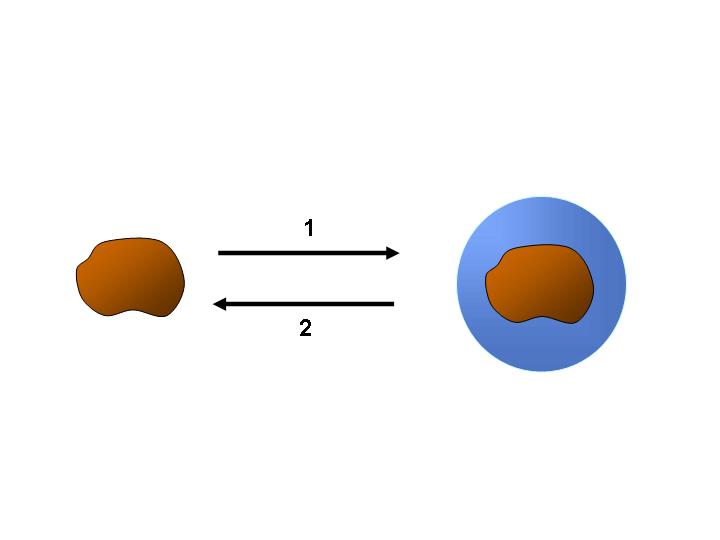|
|
 |
|
|
|
 |
| |
|
|
 |
Clouds & Particles
More |
Transformation and removal
Once they are emitted, particles stay on average in the troposphere one week or less. But sooner or later, they have to be removed. There are two ultimate exits: dry and wet deposition.
However, before particles come back to the Earth's surface by natural processes, their size, concentration, and chemical composition may change by several mechanisms. |
|
|
|
|
 |
 |
 |
|
1. Coagulation processes. Author: J Gourdeau.
|
|
 |
Evolution of particles in the atmosphere
Several mechanisms can make the physical and chemical parameters of a particle change.
As they are continuously moving, particles may collide with other particles. Sometimes, collisions will make particles stick together to form a new bigger one. Coagulation therefore leads to a continual removal of small particles replaced by larger ones.
Water vapor can condense on particles and thus the particles grow as agglomeration proceeds. |
The cloud: a big laboratory
Aerosols play an important role in formation of clouds. You know the way clouds form: water vapour condenses on cloud condensation nuclei (CCN). Hence, during the formation of the cloud, some particles become cloud droplets with the help of water. In a drop, aqueous chemical reactions take place, as in the test tube during your chemistry experiments. |
 |
 |
|
2. The particle inside the droplet may change during the condensation (1) and evaporation (2) processes. Author: J. Gourdeau.
|
|
 |
You have often noticed that a cloud will not necessarily cause rain. Droplets may evaporate, instead of growing into raindrops. Hence the remaining new particle may be different from the primary one, chemically and physically (the particle size can have changed). A particle may therefore be involved in many condensation-evaporation-condensation... processes before being removed from the atmosphere.
This transformation of aerosols in the cloud is named cloud processing. |
The way particles exit from the atmosphere: deposition
When the particles are removed from the atmosphere by falling on surfaces without involving water, the removal mechanim is called dry deposition. But when particles are scavenged by atmospheric water (like rain or snow) it is called wet deposition.
|
The simplest way of dry deposition is the particle falling under gravity, called sedimentation. This process mostly involves the heaviest ones. That’s why the biggest particles are usually found near their source. In a dry, still atmosphere the upper limit of aerosol sizes is determined by sedimentation.
Dry deposition is however strongly related to the atmospheric movements, like wind, that can carry particles long distances away from their sources.
|
 |
 |
 |
|
3. Source: NOAA Library
|
|
 |
 |
|
4. It's raining.... Source: www.freefoto.com
|
|
 |
Wet deposition occurs in the presence of atmospheric water, in the clouds or below the clouds.
In the clouds, a fraction of aerosols serves as CCN on which water condenses, to form cloud droplets. When the cloud is raining, these particles inside the droplets are removed. Moreover, the droplets in the cloud can “catch” the other particles in the surrounding air, and these collected particles are further eliminated with the falling rain.
Aerosols remaining below the raining cloud may also be scavenged by the falling raindrops or snowflakes. |
|
Finally, wet deposition is very efficient to clean the atmosphere: look at the car’s windscreens that are sometimes dusty after the rain! Or think that you often have the feeling that you breathe a purer air after the rain....
|
About this page...
Author: J. Gourdeau, LaMP Clermont-ferrand, France.
Scientific reviewer: Dr Maud Leriche, CNRS LaMP, France.
Date of generation: 2003-12-03.
|
|
 |
|









